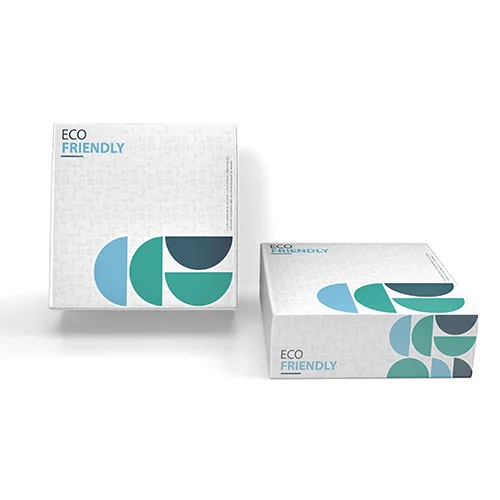Printing on various retail products and packaging boxes is a requirement for all brands. The attractive designs and symbols printed on the surface can attract the attention and interest of potential buyers. Nowadays, brands go for custom printing because it offers more variety, and they can try out which design suits them best and fulfills the business requirements.
Although the enterprises use multiple printing techniques to make the display more enticing for the end-users, the ultimate goal is to make it worth looking at and improve its visual presentation. Brands can use printing for branding purposes and incorporate brand elements such as logos, images, and taglines to create a more personalized association with the end users. The most well-renowned printing technique is offset printing.
What Is Offset Printing
Offset printing is a printing procedure through which the experts use a plate, ink, and cylinder, also known as a roller, to imprint various designs and stylish text on newspapers, magazines, brochures, packaging boxes, fabrics, and much more. The method is famous because it produces the best possible results in terms of colors and accuracy. We can also print paper-based labels, posters, and letterheads using the technique. The method is also known as offset lithography.
Usually, when we think of printing, we consider it a process in which the image or design is directly embedded onto the object’s surface. It’s not the case here. Offset printing is a type of printing that evolved from lithography, which was invented in 1796 as a cost-effective means of printing attractive artworks. While offset printing, also known as contemporary lithography, has come a long way since the 18th century, it is still based on one fundamental principle: oil and water do not mix.
Visit Thelegacyprinting Shop or request a price and tell us more about your project if you’re interested in Custom packaging!
How The Offset Printing Works
The ink rollers on the printing press transfer the image file to a printing plate during offset printing. The image areas become ink-receptive and water-repellant after plating, whereas the non-image areas become water-receptive and ink-repellant. The non-image region remains ink-free as a result of this.
Although offset printing may appear outdated, the clean, sharp lines and details on offset projects frequently need a degree of precision that other printing technologies cannot match. As a result, we can obtain ideal outcomes at significant volume and speed using offset printing. However, even though the offset process operates at total efficiency once set up, perfecting an offset operation takes longer.
Printing plates and wet ink are used in offset printing. It takes longer to make since multiple processes must be set up, and the ultimate product must be thoroughly dried before it can be finished. This approach is commonly used to print anything from magazines to brochures, stationery, and novels.
Digital Printing and Offset Printing Difference
Digital printing is among the most modern printing processes to hit the market. As you may have learned, offset printing requires plates, but digital offset printing does not. Instead, each component is printed separately on paper (or whatever medium you use). We can upload digital files, such as PDFs, to the printer.
- When smaller quantities are required, such as 15 to 20 greeting cards or 100 fliers, digital offset printing is the ideal option. Offset printing is economical when producing a particular design in large quantities.
- Another advantage of digital printing is the ability to print with varied data. Digital is the perfect choice when each component requires a unique identifier, name, or code. On the other hand, offset printing can’t fulfill this requirement.
- While offset printing is an excellent way to produce high-quality print projects, many companies and individuals do not have large printing requirements, and digital printing is the best option in such instances.
- The turnaround time for digital printing is faster than offset printing because it involves using technology and automated processes.
- In offset printing, we use plates that are then appropriately inked to apply the unique designs on objects. In the case of digital printing, the electrostatic rollers, often called “drums,” are utilized to apply toner to the paper and add full color. These drums take the help of the electrostatic charge to attract the toner, which is then embedded into the sheet through an intense heat mechanism.
What Is Offset Printing Used For
Corporations that require incredibly detailed photos and vibrant colors typically utilize offset lithography. High-quality promotional goods, such as branded coasters, mouse mats, and product advertisements, are frequently printed using offset lithography. Among other things, it can be business cards, menus, and other relevant objects. Retail firms also use offset printing to imprint graphics on packaging boxes and modify the appearance of goods.
Offset lithography also involves the commercial printing of newspapers and magazines, which is carried out with great accuracy and precision. You can also create a custom ink shade with the colors of your choice. This is a terrific option when planning a marketing campaign and needing materials printed in your corporate colors. The main advantage of offset printing is the high-quality print that you will get. It provides you with the most value for your money in printing.
Types Of Offset Printing
There are various printing techniques available in the market that can be of great help in getting a wide variety of designs imprinted on a varied number of objects:
Web Offset Printing:
More extensive and faster machinery is used in web offset printing. Large rolls of paper are fed into these machines, and the individual sheets are sorted and trimmed. It makes use of a continuous paper-feeding system. After printing, the pages are cut and divided. This is the best option for orders with a significant volume, such as newspapers, books, or magazines.
Sheet-Fed Printing:
Precut pages are used in sheet-fed printing, making them less suitable for printing high volumes of designs. On the other hand, sheet-fed enables printing on various materials such as cardboard, plastic, and metal. It doesn’t feed paper rolls through the press; instead, they feed precut pages. Sheet-fed machines are not as cost-effective as web offset machines for high-volume printing. They are, however, simpler to use.
Quick-Set Printing:
High-quality pictures like trademarks, instruction manuals, and magazines are printed using the quick set offset process. These printing machines quickly set and are slow to dry, allowing the printing machine to preserve ink. However, the aspect that makes this type more special than offset printing is that the printed objects can dry swiftly and save a lot of precious time.
Stages Of Offset Lithography
There’s a complete cycle involving different steps for the execution of offset lithography. Following are the basic steps that are part of the offset printing process:
Designing:
The design is the foundation of the custom printing process. It greatly helps when deciding on the right color combination, layout, logo placement, and finishing options. Legacy Printing is here to help you out with the design. We offer a free-of-cost design support service where you can communicate with expert designers and take their vital input on which style looks better.
Prepress:
It’s a crucial step that entails all the work before printing the object to the press. Converting the artwork files from RBG to CMYK is essential, and you need to contact the printing expert, who will offer complete guidance. The files are sent to the clients to give them an idea of what it would look like. The printing enterprises can share the file in PDF format, which the clients then review. After going through the file, they can propose layout, spacing, and design changes, which can be done at this stage.
Printing:
Now comes the stage where the printed materials are produced through the press machine. In offset printing, the color is not directly applied to the paper. Instead, metal plates transfer the design on rubber blanket cylinders. As a result, the image gets printed on paper with higher quality and precision. The result is a professional look with entirely engraved artwork on the surface.
Binding:
The final touch is given to the printed design, and the professionals trim, cut, and apply the finishing options to match the specifications requested by the client. The final product is then packed and delivered to the client.
Benefits Of Offset Printing
High-Definition Images: The offset printing results in high-quality images. The printer can manage ink flow, resulting in crystal clear pictures printed on the surface of different items.
Low Cost: Another great aspect of offset printing is that it’s cheap, and you can print a large volume of designs without spending unnecessarily. The printing plates involved in the process are also inexpensive, reducing the pocket strain.
Variety Of Surfaces: Offset printing suits best for plenty of surfaces, including different types of paper, cardstock, wood, fabric, vinyl, leather, or metal.
Want To Know More About Offset Printing?
Brands approach expert packaging and printing companies that can handle offset printing professionally and help bring more vibrancy to the products. A fabulous design imprinted on the product can instantly grab the attention of potential buyers and persuade them to go for the purchase.
TheLegacyPrinting is an apex custom packaging and printing provider in the USA that serves clients from different industries. The highly skilled professionals work for the enterprise that crafts unique designs to help you stand out. You can order as low as 100 packaging boxes with offset printing and a free delivery option across the USA.

 Cosmetic Display Boxes
Cosmetic Display Boxes
 Cream Boxes
Cream Boxes
 Eye Shadow Boxes
Eye Shadow Boxes
 Eyelash Boxes
Eyelash Boxes
 Eyeliner Boxes
Eyeliner Boxes
 Foundation Boxes
Foundation Boxes
 Hiar Extension Boxes
Hiar Extension Boxes
 Lip Balm Boxes
Lip Balm Boxes
 Lip Gloss Boxes
Lip Gloss Boxes
 Lipstick Boxes
Lipstick Boxes
 Makeup Boxes
Makeup Boxes
 Mascara Boxes
Mascara Boxes
 Nail Polish Boxes
Nail Polish Boxes
 Perfume Boxes
Perfume Boxes
 Scrub Boxes
Scrub Boxes
 Serum Boxes
Serum Boxes
 Bakery Boxes
Bakery Boxes
 Cake Boxes
Cake Boxes
 Candy Boxes
Candy Boxes
 Cereal Boxes
Cereal Boxes
 Chocolate Boxes
Chocolate Boxes
 Coffee Boxes
Coffee Boxes
 Cookie Boxes
Cookie Boxes
 Cup Cake Boxes
Cup Cake Boxes
 Donut Boxes
Donut Boxes
 Macaron Boxes
Macaron Boxes
 Muffin Boxes
Muffin Boxes
 Pastry Boxes
Pastry Boxes
 Popcorn Boxes
Popcorn Boxes
 Snack Boxes
Snack Boxes
 Tea Boxes
Tea Boxes
 Truffle Boxes
Truffle Boxes
 Wine Boxes
Wine Boxes
 Bux Board Packaging
Bux Board Packaging
 Kraft Boxes
Kraft Boxes
 Mailer Boxes
Mailer Boxes
 Bath Bomb Boxes
Bath Bomb Boxes
 Candle Boxes
Candle Boxes
 Cardboard Boxes
Cardboard Boxes
 Corrugated Boxes
Corrugated Boxes
 Die-Cut Boxes
Die-Cut Boxes
 Display Boxes
Display Boxes
 Holographic Boxes
Holographic Boxes
 Medicine Boxes
Medicine Boxes
 Pillow Boxes
Pillow Boxes
 Product Packaging
Product Packaging
 Pyramid Boxes
Pyramid Boxes
 Showcase Boxes
Showcase Boxes
 Soap Boxes
Soap Boxes
 Subscription Boxes
Subscription Boxes
 Tie Boxes
Tie Boxes
 Games Boxes
Games Boxes
 Christmas Boxes
Christmas Boxes
 Favor Boxes
Favor Boxes
 Gable Boxes
Gable Boxes
 Handle Boxes
Handle Boxes
 Ornament Boxes
Ornament Boxes
 Jewellery Boxes
Jewellery Boxes
 Telescoping Rigid Boxes
Telescoping Rigid Boxes
 Textured Boxes
Textured Boxes
 Rigid Gift Boxes
Rigid Gift Boxes


